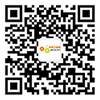Frost & Sullivan表示伺服和步進系統需求上升
http://m.sharifulalam.com 2012-07-23 15:56 《中華工控網》翻譯
Frost & Sullivan says demand up for Servo and Stepper Systems
Frost & Sullivan表示伺服和步進系統需求上升
The European servo and stepper systems market has witnessed an increase in demand in recent times. Several key factors are promoting market expansion, such as compact design, reduction in installation time, enhanced efficiency and the move towards decentralised motor drive systems.
最近,歐洲的伺服和步進系統市場需求有所上升。有幾大因素推動著市場的增長,比如緊湊的設計,安裝時間減少,更高的效率以及分散式電機驅動系統的應用趨勢。
Frost & Sullivan's Strategic Analysis of Servo and Stepper Systems Market in Europe, finds that the market earned revenues of €1623.3 million in 2010 and estimates this to reach €3385.4 million in 2017.
Frost & Sullivan的《歐洲伺服和步進系統市場戰略分析》報告,指出2010年該市場營收為16.233億歐元,并預計2017年將達33.854億歐元。
Servo systems generate significantly more revenue than stepper ones. This is due to their lower costs and ability to support greater control and accuracy in various applications. Industrial automation and automotives are the major end user segments for both servo and stepper systems, contributing almost 40% of market revenues.
伺服系統的營收明顯超過步進系統。這是因為前者更低的成本以及在不同的應用中控制能力和精確度更高。工業自動化和汽車是伺服和步進系統的主要終端用戶行業,貢獻了幾乎40%的市場收入。
“The drive for energy efficiency and decentralised systems is highlighting the need for efficient servo and stepper systems,” notes Frost & Sullivan Research Analyst Raaj Thilak Raveendran. “This shift towards energy efficiency will boost demand levels over the next 7 years.”
Frost & Sullivan研究分析師Raaj Thilak Raveendran指出:“能源效率和分散式系統驅動器突出了高效伺服和步進系統的必要性。人們轉向對能源效率的關注將推動未來7年的需求水平。”
Signs of economic recovery, paralleled by increasing investments in end user segments such as automotive, industrial automation and packaging, will also enhance growth prospects.
經濟復蘇的跡象,以及通過增加對汽車、工業自動化和包裝等終端用戶群的投資,也將促進市場增長前景。
In addition, the end user need for customised and energy efficient products is creating demand for integrated drive solutions. The potential increase in functionalities of servo and stepper systems is projected to expand the range of applications across various end user segments, which in turn will increase overall revenues. The benefits of integrated servo and stepper systems, such as networking capabilities and application oriented programming, will underpin market growth over the forecast period.
此外,需要定制和高效節能產品的終端用戶也為集成驅動解決方案創造了需求。伺服和步進系統的潛在更多功能,預計將擴大在各種終端用戶行業的應用范圍,這反過來又增加銷售收入。綜合伺服和步進系統,如具備網絡功能和面向應用的可編程功能,其帶來的益處,將在預測期內鞏固市場的增長。
“The major challenge faced by manufacturers will be to provide integrated package solutions for servo systems,” states Raveendran. “Integrated solutions can be used directly for specific applications; this is a challenge for both end users and OEMs, since they have to find the best fit for existing servo motors / servo drives.”
“制造商將面臨的主要挑戰是提供伺服系統的一攬子綜合方案。綜合方案可以直接用于一些特定應用,這對終端用戶和OEM而言都是一個挑戰,因為他們需要為現有的伺服電機、伺服驅動找出最匹配的。”
At present, servo systems’ efficiency is good. However, it can be further improved by integrating the drive and the motor, which will eventually reduce the wiring components.
目前,伺服系統的效率還是不錯的。但是,通過整合驅動和電機,最后減少布線部件,從而可以進一步改善效率。
“AC motors and drives are accepted in all industrial areas, due to their capabilities and comparatively lower price than servo systems,” remarks Raveendran. “Manufacturers who are shifting from pneumatic and hydraulic systems will look at the cost factor, so AC motors and drives will be preferred over servo systems in some applications.”
Raveendran表示:“由于其作用和比伺服系統相對更低的價格,交流電機和驅動在所有的工業領域都有應用。從氣動和液壓系統轉移過來的制造商將主要關注成本因素,因此交流電機和驅動將在某些應用比伺服系統優先考慮。”
Tier 3 servo and stepper manufacturers are moving towards integrated technology to allow better focus on specific end user segments and their applications. This strategy will also push tier 3 companies into direct competition with tier 1 participants. This could in turn reduce market concentration over the long term, even while underlining the importance of continued investments in new product development.
伺服和步進電機三級制造商正朝著集成化技術的道路發展,以便更好地專注于特定終端用戶群及其應用。這一戰略也將推動三級企業與一級企業展開直接競爭。長期而言,這反過來可以減少市場集中度,同時凸顯繼續投資新產品開發的重要性。





